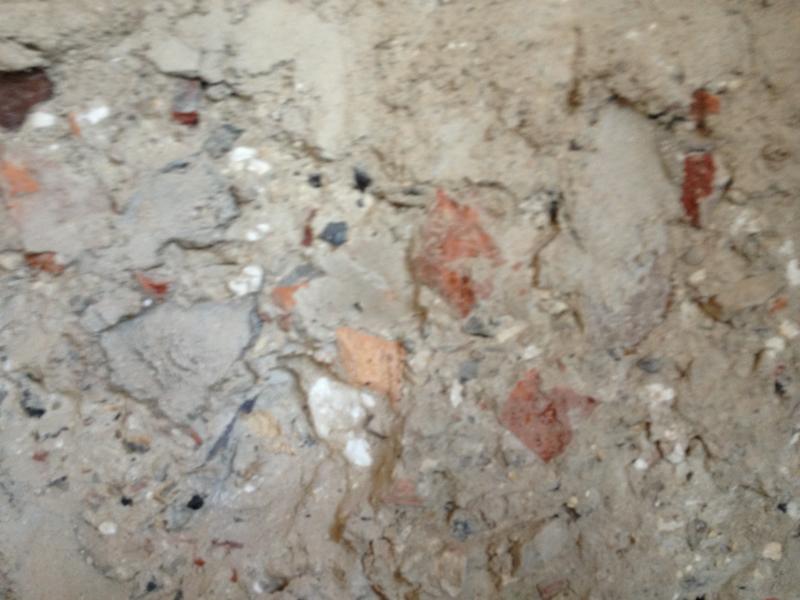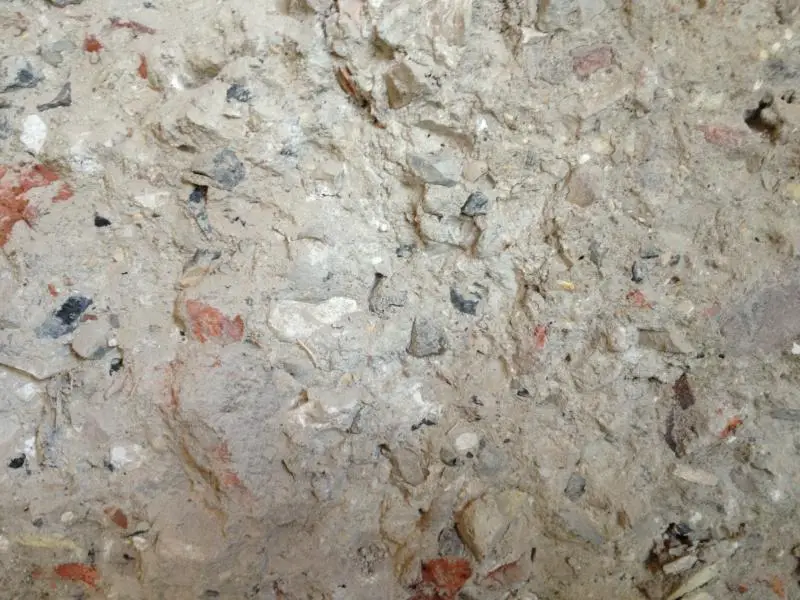I have a party wall which has damp along it. I have removed the plaster up to 1.2 meter but am trying to identify what the party wall is so I can take the best course of action for damp proofing and what render to use. Please see pic and any help to identify what this type of wall is called would be much appreciated.
You are using an out of date browser. It may not display this or other websites correctly.
You should upgrade or use an alternative browser.
You should upgrade or use an alternative browser.
Help needed to identify a wall
- Thread starter liam546
- Start date
Sponsored Links
Sorry about the picture quality, these were taken from my iPhone. The wall is earthy with broken brick, stone and flint so it is quite soft and dry in places where you can just loosely chip away and in other places its quite hard. I've looked into bungaroosh and it does have some visual similarities but I'm not convinced this is what it is as there are less stones in my wall and it seems that bunglaroosh was mostly used in the Brighton area between 1750 and 1850. My house is a Victorian around 1890 and I'm 3 hrs from Brighton. Thank you though, any other suggestions?
Bungaroosh was used mainly in Brighton, and is quite difficult to work on. Once the render is off it becomes unstable.
However there are similar wall types in other parts of the country.
Lime render is the best thing to use. Don't try and trap moisture in the wall.
However there are similar wall types in other parts of the country.
Lime render is the best thing to use. Don't try and trap moisture in the wall.
Sponsored Links
Thank you for your help, I'm thinking of using limelite renovating plaster which is a ready made cement and lime mix but is meant to be easier to use than traditional lime. It is also marketed as breathable and for use with damp walls. However because of the earthy nature of the wall I'm worried the render will not fix itself to the wall. A SBR slurry has been suggested but I understand this is mostly cement and therefore I'm worried this will not allow the wall to breathe? Any suggestions of what good adhesion products I could use to put on the wall before any renders like lime or limelight?
Will this allow the wall to breathe?
liam546,
i dont understand why you have opened this thread? you had already opened the "same thread" earlier today.
i dont understand why you have opened this thread? you had already opened the "same thread" earlier today.
I wasn't aware that I had two threads on here. I have one on here and one on a plastering forum.
Sounds like a bungaroosh type variation to me. As long as you think the wall is stable I would have thought a renovating lime plaster would do the job. You might also consider treating the surface with a stabilising solution before plastering. There are vapour permeable ones around. Sandtex certainly do one.
Hi Jeds. Thanks for the post. The wall is over 100 years old and forms the party wall to my neighbour. It's thick and although if you chisel away it crumbles away it still feels fairly solid. Having done lots of reading and listened to advice on forums I've decided to move forward with the following to deal with the damp and allow the wall to breathe.
1: remove all gypsum plaster and what looks like scratch cement coat.
2: soak wall with water
3: apply x2 base (mix of hydraulic lime, x4 course sand)
4: apply x1 finishing coat ( mix of hydraulic lime, x4 less course plastering sand)
What do you think?
1: remove all gypsum plaster and what looks like scratch cement coat.
2: soak wall with water
3: apply x2 base (mix of hydraulic lime, x4 course sand)
4: apply x1 finishing coat ( mix of hydraulic lime, x4 less course plastering sand)
What do you think?
Thanks Stuart fir the advice on top coat.
Can I ask why non hydraulic for inside?
Also....if non hydraulic this is a lime putty isn't it where it needs to be slaked for 3 months?
Can I ask why non hydraulic for inside?
Also....if non hydraulic this is a lime putty isn't it where it needs to be slaked for 3 months?
Non hydraulic is more breathable. It takes longer to cure, so outside is more likely to be affected by the weather.
Mature lime putty is fully slaked and is less likely to give problems. Lime suppliers stock it, and can advise you.
Mature lime putty is fully slaked and is less likely to give problems. Lime suppliers stock it, and can advise you.
Stuart is right. But if it were me I would probably use Limelite renovating plaster. Depends how historical you consider your house to be and how authentic a finish you want. Mediaeval manor house - non-hydraulic lime every time. Bog standard Viccy town house - Limelite.
DIYnot Local
Staff member
If you need to find a tradesperson to get your job done, please try our local search below, or if you are doing it yourself you can find suppliers local to you.
Select the supplier or trade you require, enter your location to begin your search.
Please select a service and enter a location to continue...
Are you a trade or supplier? You can create your listing free at DIYnot Local
Sponsored Links
Similar threads
- Replies
- 10
- Views
- 615



